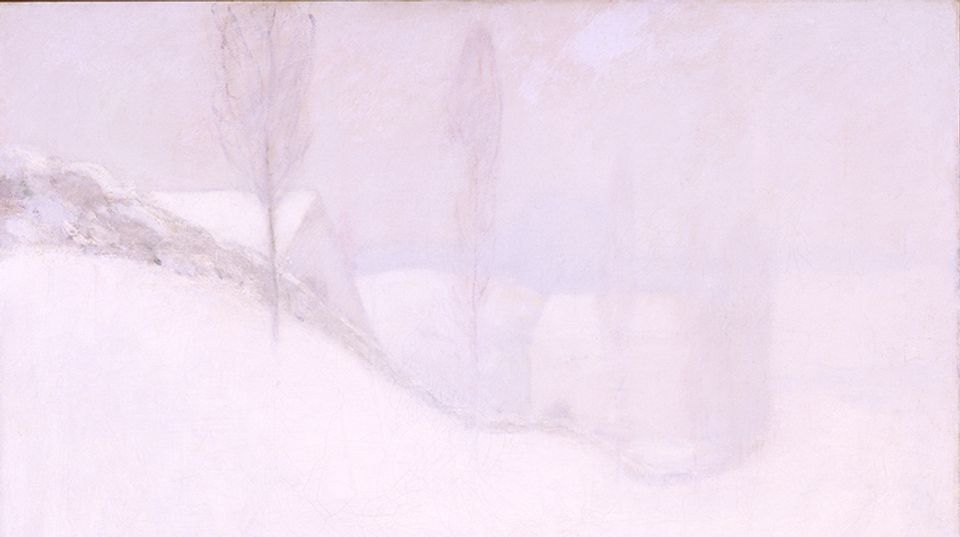
Are you excited for the total eclipse? Many people across North America are in luck this year, particularly those who reside directly in the path of the eclipse, starting in Texas and traveling through Oklahoma, Arkansas, Missouri, Illinois, Kentucky, Indiana, Ohio, Pennsylvania, New York, Vermont, New Hampshire, and Maine. In a total eclipse, the moon blocks the view of the sun from Earth, appearing like a hole in the sky and allowing the sun’s corona, usually masked by bright light, to become visible.
While it’s exciting to witness this year’s natural wonder, let’s go back in time to 1970, and get inspired by the eclipse Thomas may have witnessed on March 7, visible to the entire eastern United States.
The Eclipse is the last work Thomas created as part of her “Space” series. With its dark blue core and radiating rings of color, Thomas’s painting captures this rare moment of celestial alignment, its off-center composition suggesting the progressive movement of the moon across the sky.
According to Melissa Ho, curator of twentieth century art at the Smithsonian American Art Museum, this is “one of the true standouts works in our twentieth century art collection. A total solar eclipse is when there is this alignment between the earth, the moon, and the sun. From where we stand on the earth, the moon is directly blocking the sun, and it gives the appearance of there being a hole in the sky. That's what the dark blue circle in this painting represents. The other thing that happens during a solar eclipse is it reveals the sun's corona, its outer atmosphere, and this is the energy emanating from the sun that you usually can't see because it's been blocked by the brightness of the sun itself.”
Ho continues, “It's the perfect opportunity for Alma Thomas to create energy on the canvas. And she is doing that with these concentric, radiating circles, these rings of color that are vibrating out from that dark, dark navy-blue center. Thomas's paintings often are composed around circular forms, but most of the time they're centered, they're symmetrical. What's really unique about this painting is how it's offset…relaying this sense of progressive movement across the sky. Because of the scale of The Eclipse, you can really get in and see the process by which she's laying down the paint and defining the pattern of these concentric circles. It's an amazing, energy filled painting, and I love this work.”
This story is part of a series that takes a closer look at artworks in the special exhibition Composing Color: Paintings by Alma Thomas with material drawn from texts and an audio guide created for the exhibition.
Share the story of Alma Thomas with a young person in your life. Drawn to Art, SAAM's series of web comics about American women artists, features Thomas and 29 other trailblazers.


















